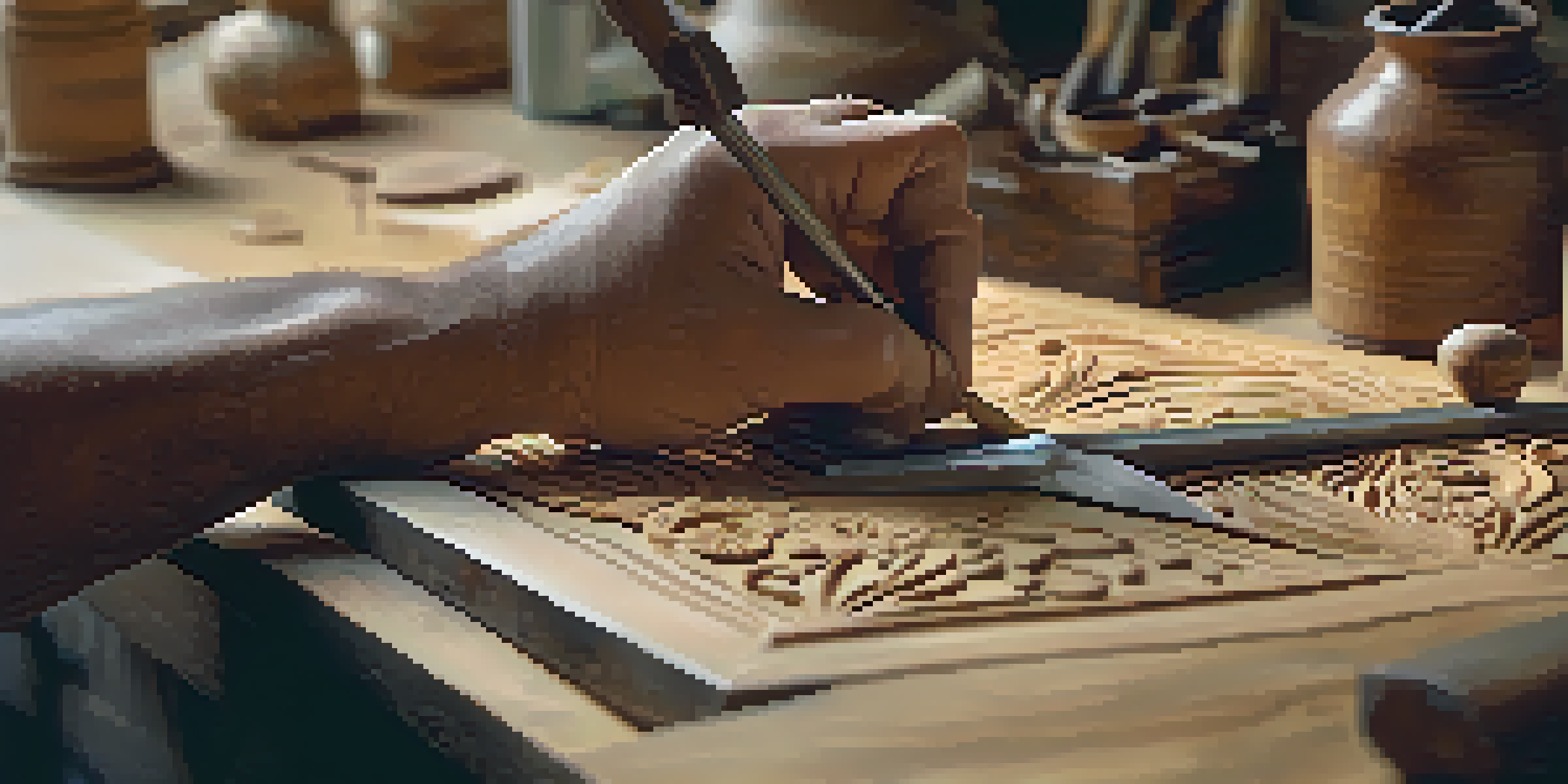Carving Techniques Essential for Artifact Conservation Efforts

Understanding the Importance of Carving in Conservation
Carving plays a crucial role in artifact conservation, allowing conservators to repair and restore historical items. These techniques help maintain the integrity and original aesthetics of artifacts, ensuring they can be appreciated by future generations. By understanding the nuances of carving, professionals can effectively address damage without compromising the piece's authenticity.
Basic Carving Tools Every Conservator Should Know
Having the right tools is essential for effective carving in artifact conservation. Basic tools like chisels, gouges, and knives are fundamental for shaping and detailing surfaces. Each tool serves a specific purpose, allowing conservators to execute precise cuts and achieve the desired finish on various materials.
Carving is Essential for Conservation
Effective carving techniques help conservators repair artifacts while preserving their authenticity and integrity.
Selecting the Right Material for Carving
The choice of material significantly impacts the carving process and the final outcome. Different artifacts may require distinct materials, such as wood, stone, or synthetic composites. Understanding the properties of each material helps conservators select the most appropriate one for repairs, ensuring longevity and stability.
Techniques for Carving Soft vs. Hard Materials
Carving techniques can vary greatly depending on whether the material is soft like pine or hard like oak. For soft materials, a gentle touch and steady hand can achieve smooth results, while hard materials may require more force and specialized techniques to avoid splintering. By mastering these techniques, conservators can adapt their approach based on the artifact's specific needs.
Choosing the Right Tools Matters
Using the appropriate carving tools, like chisels and gouges, is crucial for achieving detailed and precise results in conservation.
Incorporating Finishing Techniques in Carving
Once the carving is complete, finishing techniques come into play to protect and enhance the artifact's appearance. Sanding, staining, and sealing are essential steps that ensure the carved areas blend seamlessly with the original material. Proper finishing not only improves aesthetics but also provides a protective layer against environmental damage.
Documenting Carving Processes for Future Reference
Documentation of carving processes is vital in the field of artifact conservation. By keeping detailed records of techniques used, materials selected, and challenges faced, conservators create a valuable resource for future projects. This practice not only promotes best practices but also fosters a culture of knowledge sharing within the conservation community.
Training Enhances Carving Skills
Ongoing education through workshops allows conservators to stay current with the latest carving techniques and tools.
The Role of Training and Workshops in Carving Skills
Participating in training sessions and workshops can significantly enhance carving skills for conservators. These educational opportunities allow individuals to learn from experienced professionals, practice techniques, and receive constructive feedback. Investing in ongoing education ensures that conservators remain up-to-date with the latest methods and technologies in the field.
Future Trends in Carving Techniques for Conservation
As technology advances, new carving techniques and tools are emerging that can transform artifact conservation. Digital carving tools, for instance, allow for precise replication of intricate designs, making restoration efforts more accurate than ever. Embracing these innovations can lead to more effective conservation strategies and preserve artifacts in ways previously thought impossible.